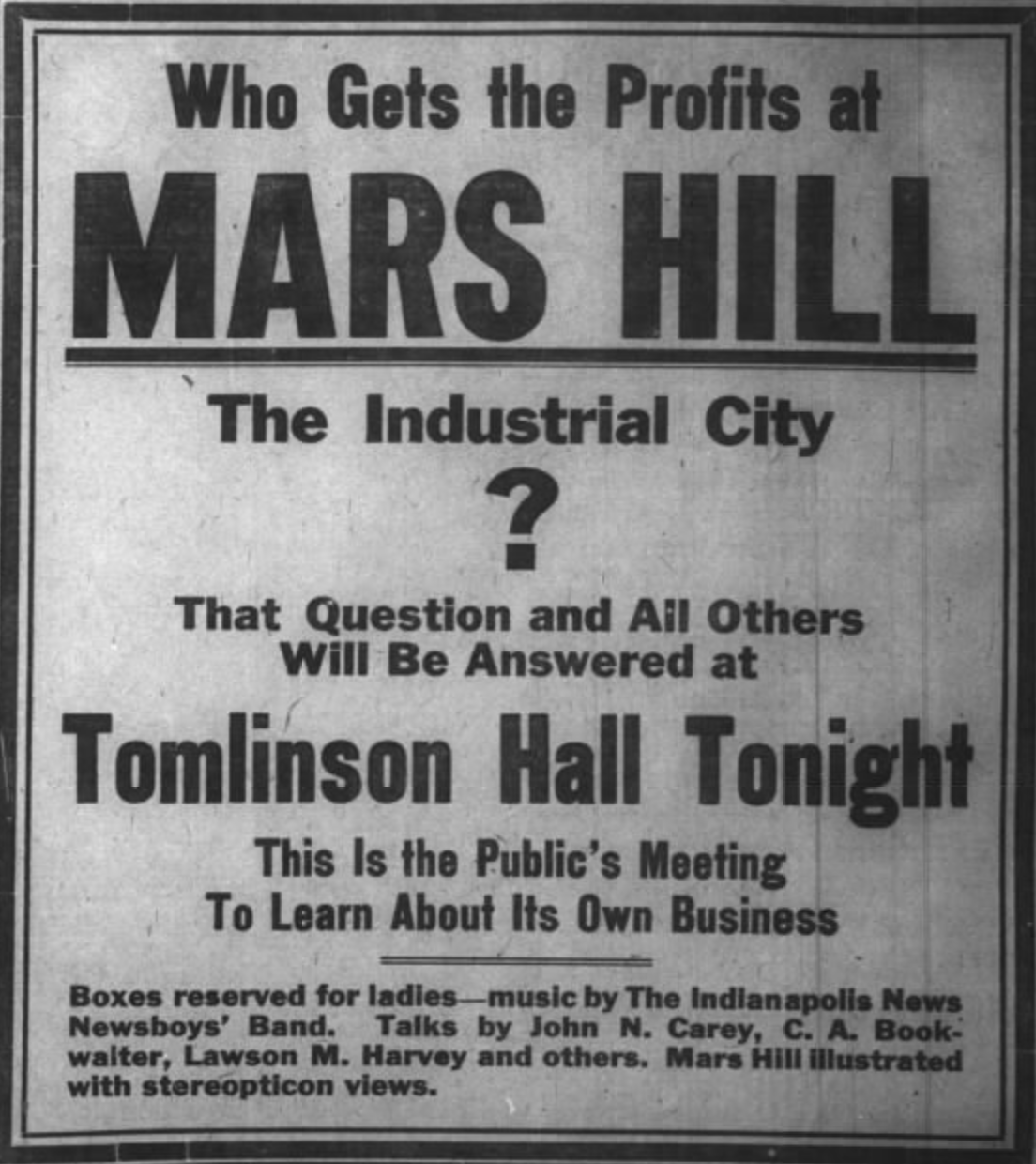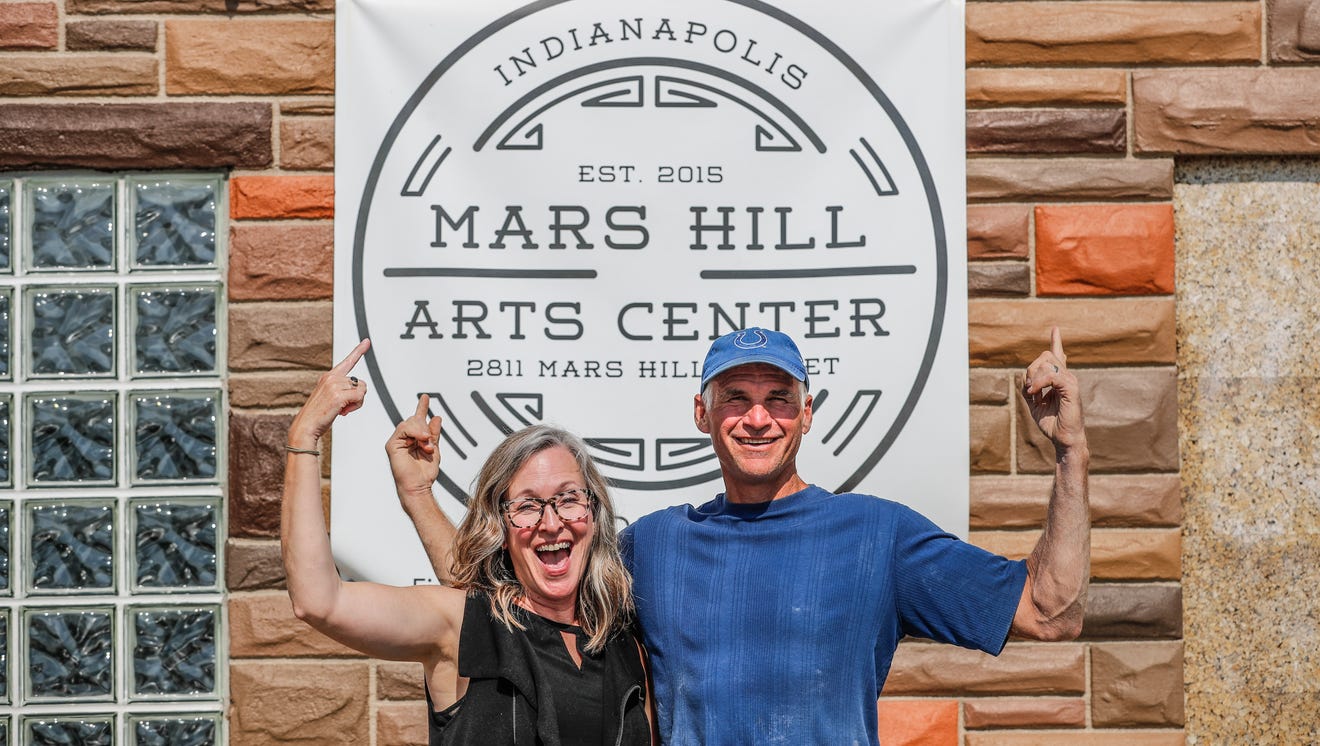Mars Hill is a Southwest side neighborhood in the vicinity of the Holt Road and Kentucky Avenue intersection. It was founded in 1911 with high hopes and an ambitious scheme.

A group of Indianapolis businessmen planned to make the picturesque farming community a new industrial suburb with factories and 50,000 residents. They formed the Greater Indianapolis Industrial Association and purchased several farms, including a large horse farm owned by Sterling Holt. Reportedly, the new town took its name from a hill dubbed “Marr’s” for a 19th -century settler.
To finance the construction of the new city, the group proposed to sell 8,000 lots to the public. Proceeds were to be used to move out-of-state factories to the new site and pay for city services. At a mass meeting in February 1911, civic-minded citizens were urged to invest in the future and buy lots for $400 each. Within a few months, however, the association had not sold the required number of lots and the scheme failed. The group reorganized as a stockholding company in 1912 and found some success, though not enough to implement original plans.
In the years that followed, some small factories moved to Mars Hill, but the promised city did not develop. The area was never incorporated and roads were not paved, nor were sewers or water provided. Since there were no building codes, residents built whatever they could afford, including tar-paper shacks and half-houses (basement dwellings).
Mars Hill enjoyed a small building boom during World War II when many found work at the nearby plant, but problems continued to plague the area in the 1950s and 1960s. With the area’s inclusion into the city under , Indianapolis officials were forced to deal with Mars Hill’s sewage, trash, abandoned buildings, and unpaved roads.

In the late 20th century and early 21st century, the Mars Hill neighborhood continued to struggle with the problems of poverty. Mars Hill reported a poverty rate that was 20 percent higher than in the rest of the Indianapolis metro area in 2015. The departure of such companies as in 2002 and in 2017 increased the need for job training programs in the area. In addition, new churches and businesses started up in the neighborhood only to outgrow their buildings and move elsewhere.
Some positive developments, however, also took root in the area. A community garden serves the neighborhood, and Community Caring and Sharing provides food, clothing, and community educational programs. Eldon Palmer, owner of Palmer Trucks, also donated space for a pocket park.
In 2015, the Mars Hill Arts Center opened, hoping to become the anchor for the establishment of more local businesses and restaurants. Two years later, the Southwest Association of Neighbors (SWAN) was created to spark the establishment of a community development corporation to serve Mars Hill and other southwest Indianapolis neighborhoods.

Is this your community?
Do you have photos or stories?
Contribute to this page by emailing us your suggestions.